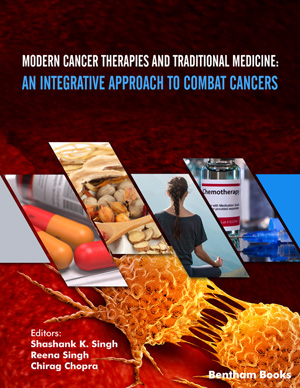
Abstract
Background: IL-33/ST2 signaling plays crucial roles in the development and progression of various human malignancies. However, its significance in intrahepatic cholangiocarcinoma (ICC) still remains unclear.
Objective: This study aimed to investigate the expression of IL-33/ST2 signaling and its correlations with macrophage heterogeneity and ICC patients' clinicopathologic features.
Methods: The expression of different phenotype macrophage markers and IL-33/ST2 signalingrelated markers was detected. The correlation between L-33/ST2 signaling and different phenotype macrophage markers as well as ICC patients' clinicopathologic data was evaluated.
Results: Massive heterogeneous cancer cells and PAS-positive cells were observed in tumor tissues. CD68-positive cells accumulated in tumor tissues and expression of both M1 phenotype markers and M2 phenotype macrophage markers was higher in tumor samples than para-carcinoma samples. However, M2 phenotype macrophages represented the dominant macrophage population in ICC tissues. Plasma levels of IL-33, ST2, and MIF were evidently enhanced in ICC patients compared to healthy controls. IL-33/ST2 signaling-related markers exhibited a massive increase in tumor samples than para-carcinoma samples. IL-33 and ST2 expression in ICC tissues was positively associated with M1 and M2 phenotype macrophages. Plasma levels of IL-33, ST2, and MIF were correlated with the diameter of tumor lesions, lymph node metastasis, TNM stage, and tumor differentiation degree. Multivariate analysis demonstrated IL-33 expression to exhibit a correlation with the diameter of tumor lesions, lymph node metastasis, and TNM stage. Additionally, there was a relationship observed between ST2, MIF expression, and diameter of tumor lesions plus TNM stage.
Conclusion: IL-33/ST2 signaling exhibited a positive relationship with macrophage heterogeneity in ICC tissues, and upregulated levels of IL-33, ST2, and MIF were associated with aggressive clinicopathologic characteristics. These findings may provide promising diagnostic biomarkers and potential therapeutic strategies for ICC patients targeting IL-33/ST2 signaling.
Graphical Abstract






















